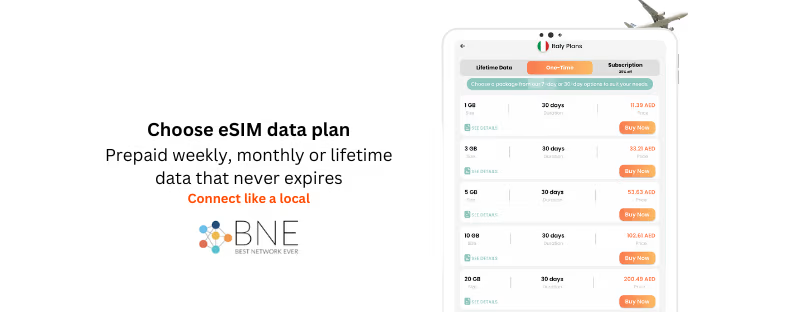
Plan Your Bay Area Adventure: The Ultimate BART Trip Planner Guide
The Bay Area Rapid Transit (BART) system serves the San Francisco Bay Area, connecting San Francisco with cities in the East Bay and northern San Mateo County. With over 50 stations across 5 lines, BART is an efficient way to get around the Bay without driving. bart trip planner
To help riders navigate this extensive network, BART offers an online trip planner tool. This allows you to enter your origin and destination to view customized trip options, including transfers if needed. With over 200,000 rides per day on BART, trip planning is essential for an enjoyable public transit experience.
Knowing your route ahead of time ensures you board the correct train, transfers go smoothly, and you arrive at the right station. The BART Trip Planner provides clear guidance so you can ride confidently. As the Bay Area’s backbone for regional travel, learning to plan your BART trip makes getting around easier.
Getting Started with the Trip Planner bart trip planner
The first step to planning your BART trip is accessing the trip planner tool. You can find the trip planner on BART’s website or by downloading the official BART mobile app for iPhone or Android.
While you can use the trip planner without an account, signing up for a free BART account allows you to save trips, stations, and routes for quicker access in the future.
To create an account:
- Go to BART’s website and click on “Create Account” in the top right corner.
- Enter your email address and create a password.
- Fill in your contact information.
- Agree to the terms of use.
- Verify your email address by clicking the link sent to your inbox.
Once your account is created, you can sign in on BART’s website or mobile apps and start using the trip planner while logged in to save your information.
Entering Your Origin and Destination
The first step in planning your BART trip is deciding where your trip will start and end. You have a few options for specifying your origin and destination points:
- Using station names – You can simply type in the name of the BART station where you want your trip to start and end. The trip planner will automatically populate a list of suggested stations as you type.
- Using addresses – If you don’t know the name of the nearest BART station, you can enter any street address, landmark or point of interest. The trip planner will find the closest station for you.
- Using landmarks – Major landmarks, attractions, businesses, etc. can also be used instead of specific addresses. For example, typing in “Chase Center” will bring up the San Francisco station closest to the arena.
- Recent trips – For quick access to trips you’ve planned before, you can select an origin and destination from the list of your recent trips.
- Favorites – If you commute between the same stations regularly, you can save these as a favorite trip to avoid entering them manually each time.
The trip planner is quite flexible in the ways you can specify where your trip will begin and end. Whether using station names, addresses, or landmarks, the system is designed to make it quick and easy to enter your points. Saving frequent trips as favorites or accessing recent ones simplifies the process even further.
Customizing Your Trip bart trip planner
The BART trip planner allows you to customize your trip in a few helpful ways. One customization option is setting your desired departure or arrival time. When first using the trip planner, it will show schedule results for the current time. However, you can specify that you want to leave at a different time, arrive by a certain time, or look at schedules for later in the day or week.
To set a departure or arrival time, simply click on the time shown in the trip options. This will open up a menu where you can set your preferred time. The trip planner will refresh with schedule results matching your requested time.
You can also specify the days of the week for your trip. Upon first entering your origin and destination, the trip planner will show options for today’s date. To look at a different date, click on the date displayed at the top of the trip options. You’ll then be able to select another date from a calendar popup. This is useful for planning future trips.
The BART trip planner makes it easy to customize your trip search to match your ideal travel time and date. Setting a specific departure or arrival time and selecting future dates allows you to find schedule options that work best for your needs.
Reviewing Trip Options
The Trip Planner provides a few options for your journey, including regular and optimized routes. The regular routes follow the standard BART schedule, while the optimized options aim to get you to your destination faster by minimizing transfers and total trip time.
When reviewing the trip options, pay attention to:
- Schedules: The Trip Planner shows the departure and arrival times for each leg of your journey. Make sure the times work for your schedule.
- Transfers: Some trips may require transferring trains to a station. Transfers add time to your trip. Optimized options try to minimize transfers.
- Total trip duration: Look at the total estimated trip length, including time on trains and transfers. Optimized options aim to shorten the total duration.
- Fares: The Trip Planner shows the estimated fare for each option. Fares are calculated based on factors like distance traveled and transfers. Regular and optimized options may have different fares.
Carefully review the options to choose the trip that best balances your priorities, like convenience, speed, and cost. The Trip Planner aims to provide all the key information you need to evaluate the options for your journey.
Navigating the Station bart trip planner
Once you’ve purchased your ticket and are ready to board, finding the right platform can seem daunting, especially in large stations like Embarcadero and 12th St Oakland. Don’t worry, though; BART stations are designed to make navigating easy with clear signs and maps pointing you where to go.
Look for signs hanging from the ceiling or on posts throughout the station. These will indicate things like directional arrows pointing to platforms, as well as list the destination names. Platform signs are also posted at the entrance to each platform, noting the line and destination for trains arriving there.
Make use of the station maps located near the entrance gates. These maps show an overhead diagram view of the entire station layout, marking each platform and routes to access them. Locate your platform number on the map, then follow the walking route indicators.
For multi-level stations like 12th St Oakland, be sure to note if your platform is specified as the upper or lower level. Stairs, escalators, and elevators are marked to take you to the correct floor.
If you get turned around, don’t hesitate to ask a station agent in a BART uniform. They are happy to point you in the right direction. By following station signs, maps, and assistance, you’ll be able to easily locate the platform entrance to board your awaiting train.
Paying Your Fare
When riding BART, you have several options for paying your fare. The most convenient option is to use a refillable Clipper card, which can be used on all major Bay Area transit systems. Clipper cards offer discounts compared to paper tickets and make it easy to tap your way on and off trains without fumbling for cash. You can purchase a Clipper card at any station from a Clipper vending machine.
If you don’t have a Clipper card, you can purchase a paper BART ticket from a ticket machine. Ticket prices vary based on your destination, and machines accept credit cards and cash. Don’t forget to validate your paper ticket at a validator machine before entering the fare gates! Validated tickets will have a timestamp on them that shows they are ready for travel.
Discounted fares are available for youth, seniors, riders with disabilities, and riders with qualifying low incomes. Make sure to bring a valid ID and paperwork to show eligibility. Children under 5 years can ride for free with an adult.
No matter what kind of fare media you use, be sure to tag at the fare gates both when entering and exiting the paid area of the station. Gates will deduct the correct fare based on your origin and destination. Having a valid fare is essential to avoiding citations from BART police.
 Boarding the Train
Boarding the Train
Once you’ve arrived at the correct platform, locate the sign with your train number and destination to find the boarding area. Have your ticket or Clipper card ready, as you may need to tap it on a reader before entering the platform.
Listen for announcements about your train’s arrival and allow disembarking passengers to exit before you board. Go to the door nearest your assigned seat, if possible. Keep small children close as you navigate the platform area.
When boarding, move towards the center of the car to allow other passengers to enter behind you. Stow luggage in overhead bins or designated areas so aisles remain clear. Take your seat promptly so you don’t block doors or foot traffic. Sit facing the direction of travel if you are prone to motion sickness.
If you have special needs, look for priority seating near doors and let the conductor know if you require any assistance. Hold small children securely, and do not allow them to move around the train while in motion. Use seat belts if available, and follow all safety guidance provided by BART staff.
Notify the train operator immediately if you notice any suspicious activity or safety issues on board. Follow the rules and instructions to ensure an orderly, timely, and safe trip for all passengers.
Transferring Trains
When planning your BART trip, the trip planner will suggest transfer points and times to get you to your destination efficiently. However, you’ll want to pay close attention to transfer times when reviewing your trip options.
BART schedules its trains to allow for quick transfers between lines. If you need to transfer from one line to another, the minimum time between trains is typically 5–15 minutes. This allows sufficient time to walk between platforms at transfer stations.
It’s important not to miss your transfer train, as the next train may be up to 15 minutes later. Be sure to account for the transfer time when reviewing your trip plan, and don’t cut it too close. Give yourself a few extra minutes, as needed, to walk briskly between platforms.
When you arrive at a transfer station, quickly check the signs to confirm which platform you need for your connecting train. Some stations have long walks between platforms, so give yourself enough time to get there. Don’t linger on the train after it arrives at the transfer station.
If you just missed a transfer, don’t worry. Another train will be along shortly. Wait in the direction of your destination so you can board quickly when the next train arrives. With smart planning using the BART trip planner, you’ll minimize transfer waits and travel efficiently.
Arriving at Your Destination
As your train approaches the destination station, be sure to listen for announcements of the upcoming stop. The conductor will announce the station name over the intercom as you arrive.
When exiting the train, follow the signs for the station exit. The signs are posted throughout the station to direct passengers to the main exit area. Proceed up the stairs or escalator, and you’ll find yourself on the street.
If you need help finding your exact endpoint, don’t hesitate to ask a station agent. Attendants are usually available to point you in the right direction.
Remember, for a smooth exit, keep an eye out for your stop, follow the exit signs, and ask for help if you need it. With these tips, you’ll be able to seamlessly complete your BART trip by arriving safely and efficiently at your destination.











